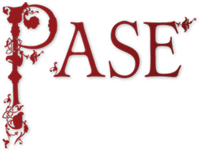Table of Contents
Top of page
Name
Summary
Distribution Map
Property List
Profile
Bibliography
Bottom of page
Howard 2
Howard ‘of Navestock’ (Essex), fl. 1066
Male
SDB
4 of 5
Summary
Howard 2 was a free man holding one of two manors in south-west Essex TRE that were together assessed for just under 5 hides and with a value of £10.Distribution map of property and lordships associated with this name in DB
List of property and lordships associated with this name in DB
Holder 1066
| Shire | Phil. ref. | Vill | DB Spelling | Holder 1066 | Lord 1066 | Tenant-in-Chief 1086 | 1086 Subtenant | Fiscal Value | 1066 Value | 1086 Value | Conf. | Show on Map |
|---|---|---|---|---|---|---|---|---|---|---|---|---|
| Essex | 5,7 | Navestock | Houard | Howard 'of Navestock' | - | Maurice, bishop of London | unnamed canons of St Paul's, London | 2.58 | 5.00 | 5.00 | B | Map |
| Totals | ||||||||||||
Profile
Howard 2’s manor was one of seven TRE estates at Navestock in south-west Essex, encompassing two hill-spurs beside the River Roding and extending to the headwaters of the Weald Brook. In DB the details of Howard’s estate are combined with those for one held by Wulfsige, noting simply that the two free men held it ‘as two manors’ (pro ii maneri) and for ‘5 hides less 20 acres’ TRE. This need not imply any direct connection between Howard and Wulfsige but it does render it impossible to know how the resources were divided between the two manors.All but one of the estates at Navestock were held by the canons of St Paul’s cathedral, London, in 1086, with Domesday noting that the canons claimed to hold those of Howard and Wulfsige ‘by the king’s gift’ (ex dono regis). It appears that after the Conquest the canons and the bishop of London were trying to regain lands lost or alienated earlier in the eleventh century, because an estate at Navestock was listed among those of St Paul’s that contributed to the manning of a warship in c.1000 (S 1458a; Kelly 2004: 102, 173, 196); in the early twelfth century a charter (S 337) purporting to be a tenth-century royal grant of Navestock was forged to strengthen their claim. The means by which Howard and Wulfsige obtained their estates remains unclear, however.
Howard 2’s Continental Germanic name is not otherwise recorded in pre-Conquest England and implies that he was of continental rather than insular origin. There is no reason to consider him in connection with any other person or estate.
Bibliography
Kelly 2004: Charters of St Paul’s, London, ed. S. E. Kelly, Anglo-Saxon Charters 10 (Oxford, 2004)
